Pro bike: Ivan Basso's Liquigas Cannondale SuperSix Hi-Mod
Green machine for the mountains
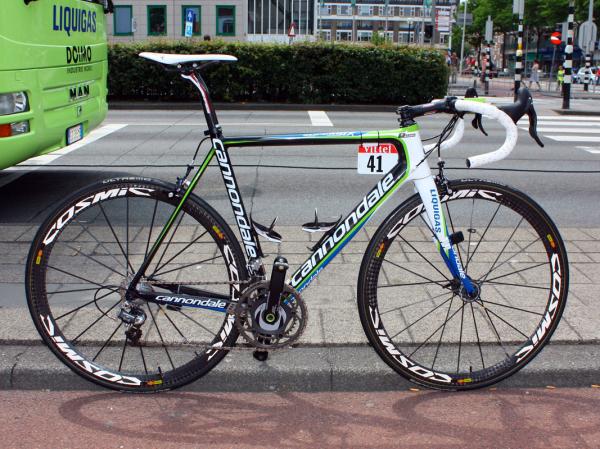
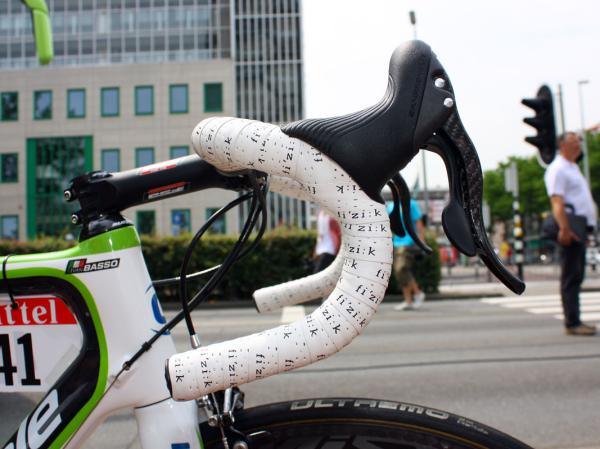
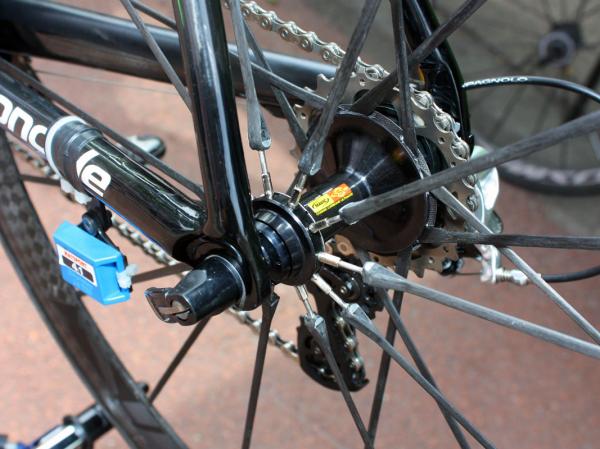
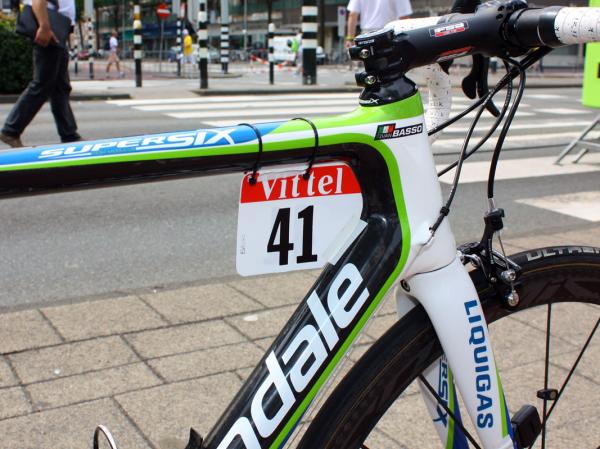
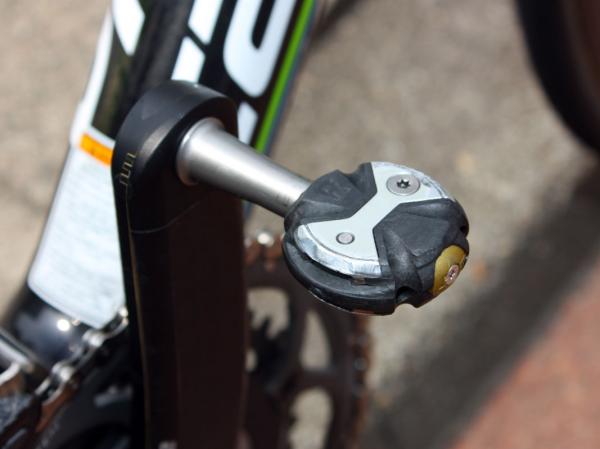
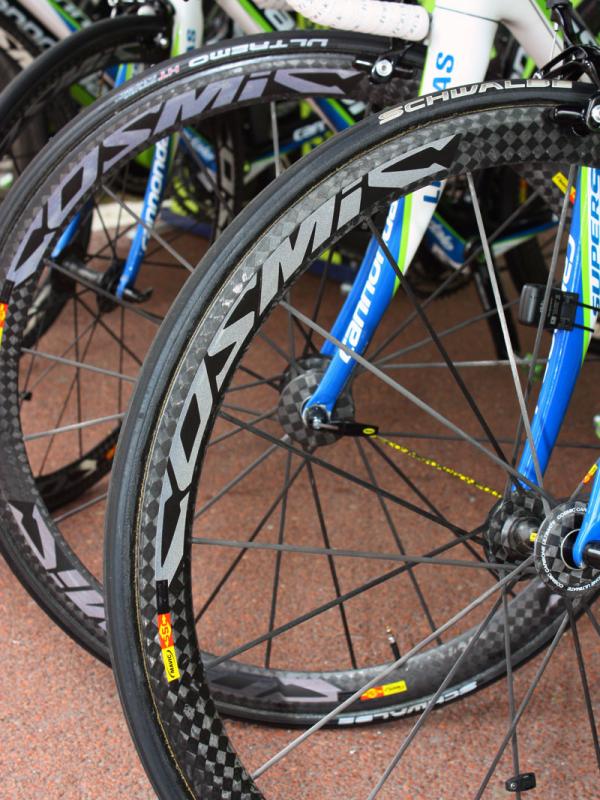
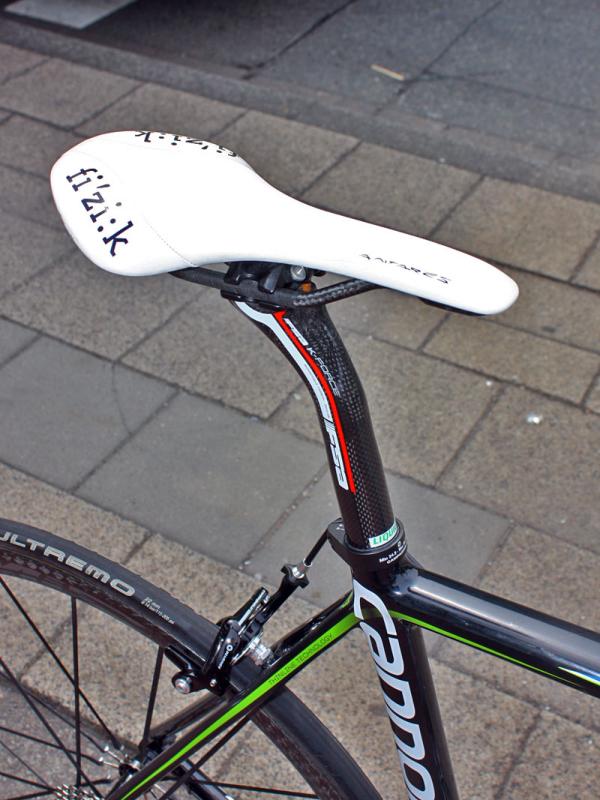
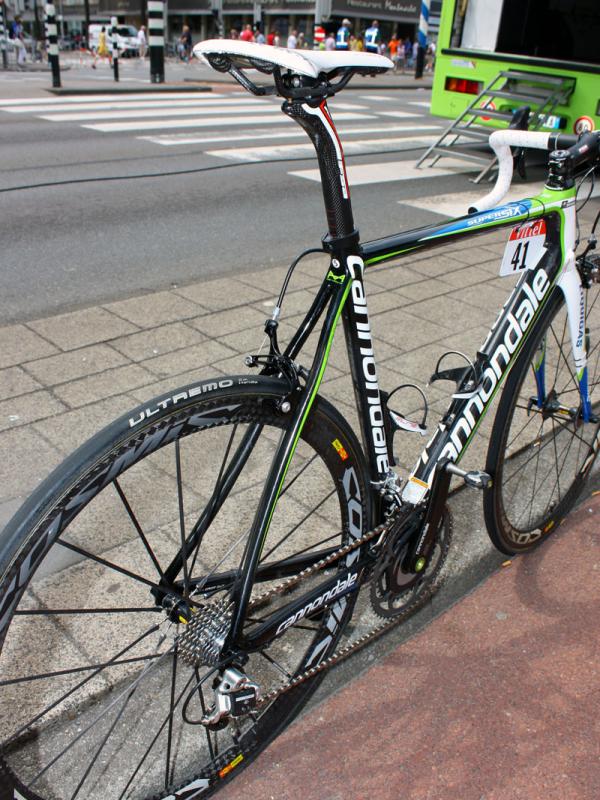
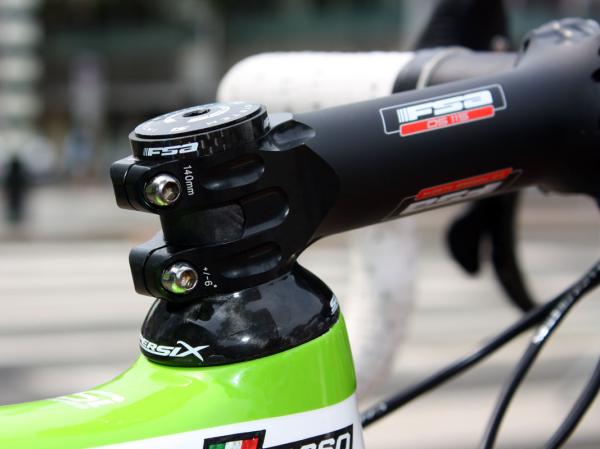
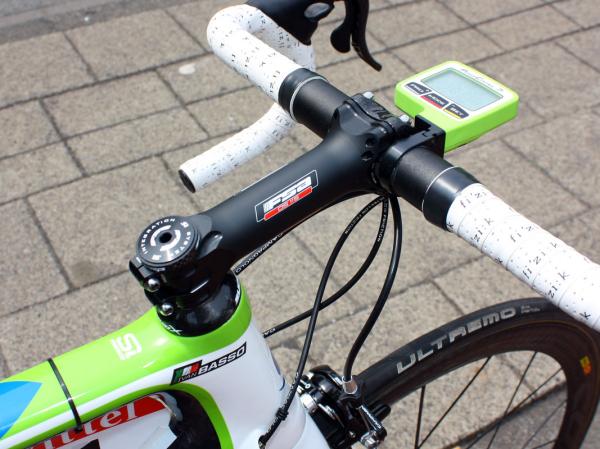
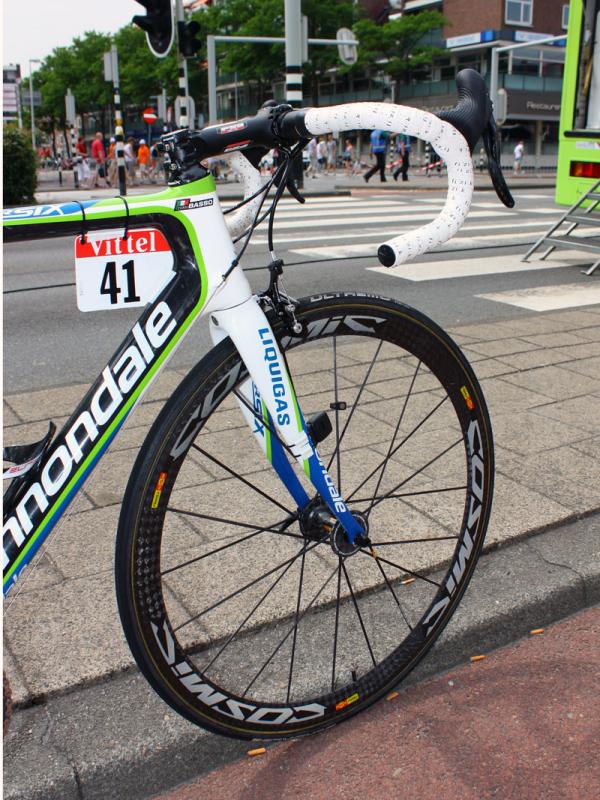
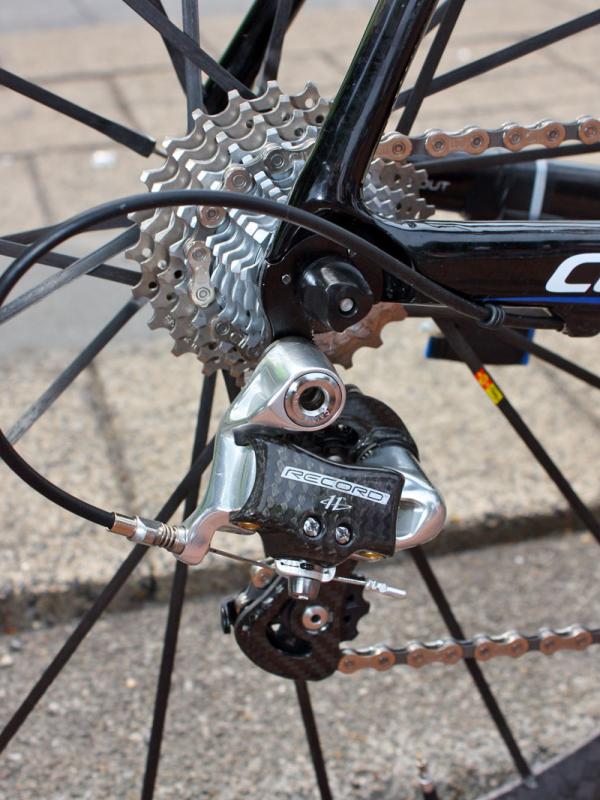
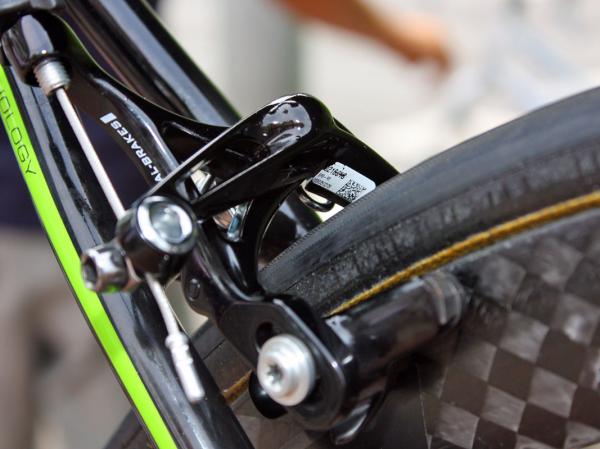
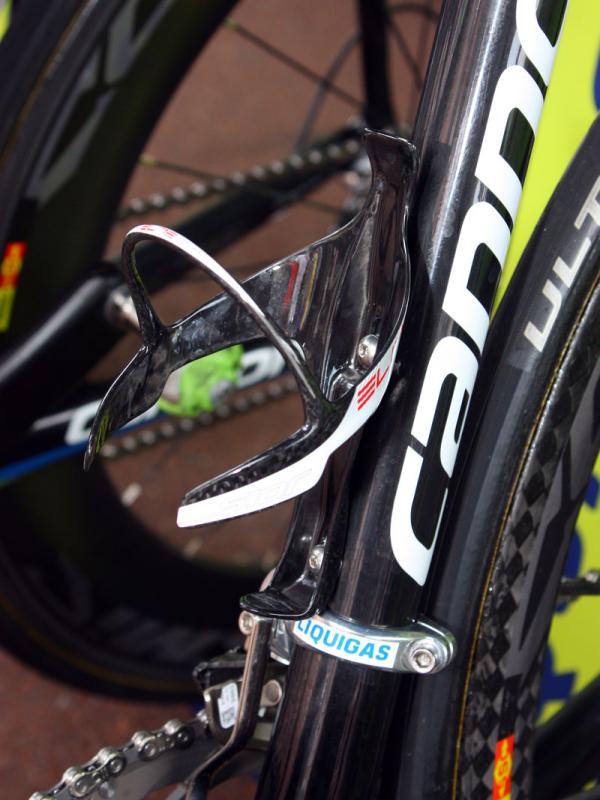
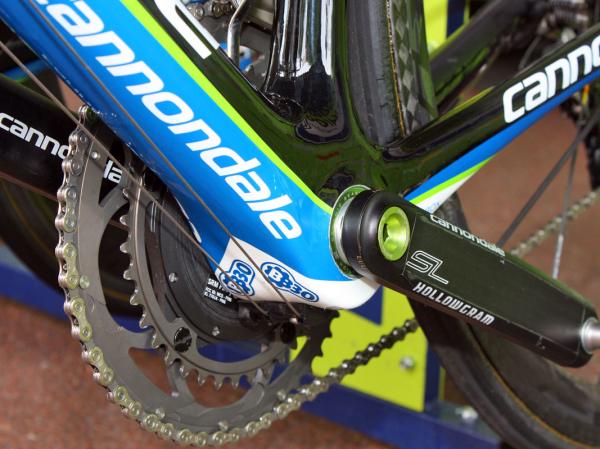
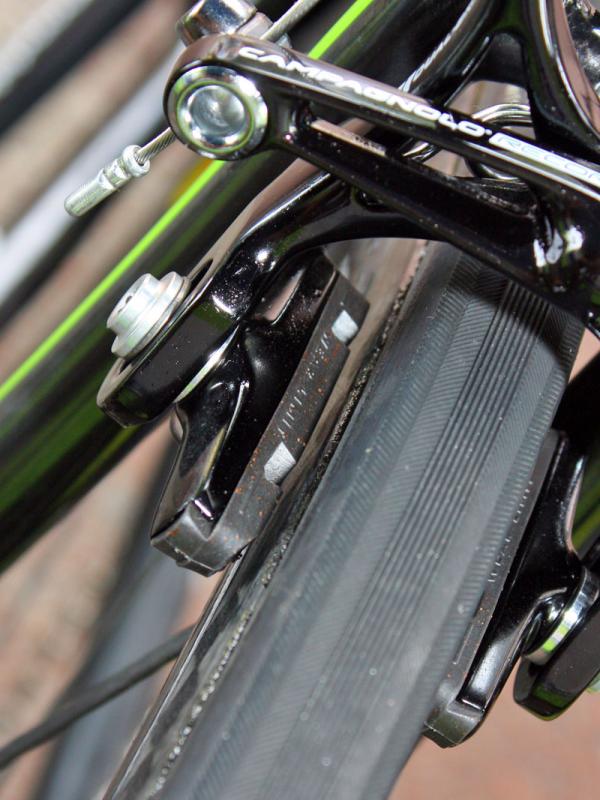

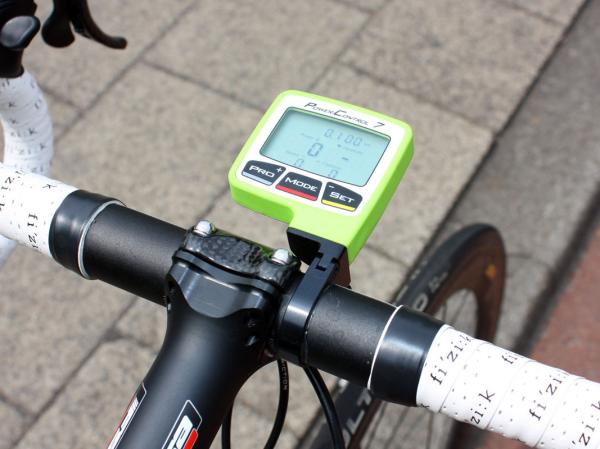

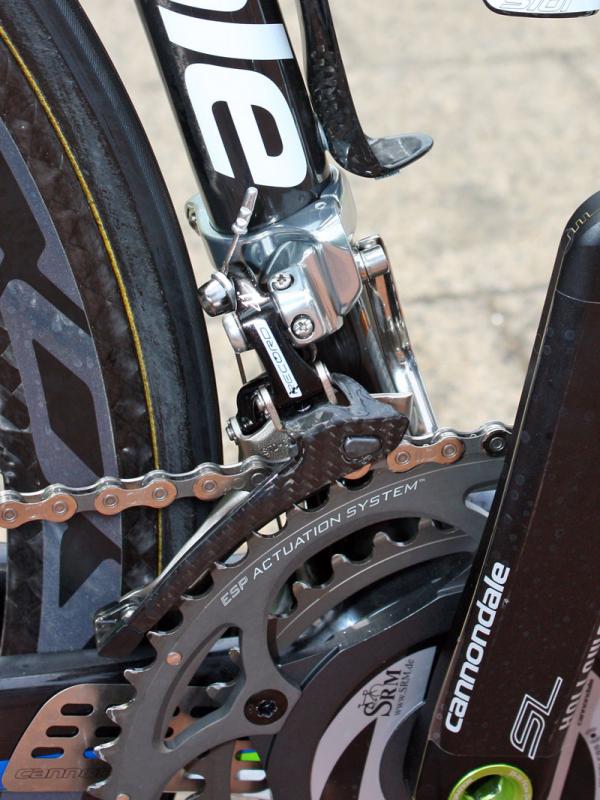
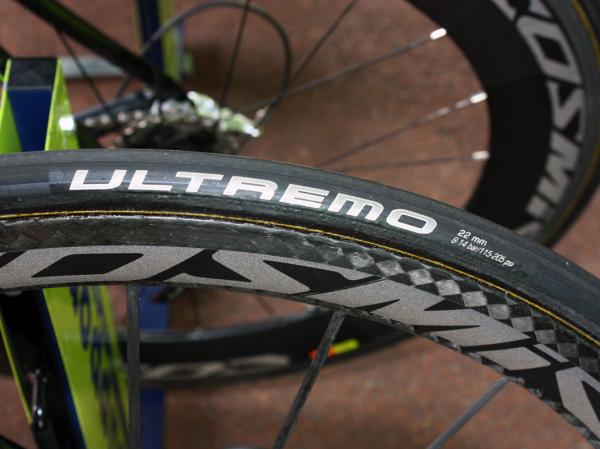
2010 Giro d'Italia winner Ivan Basso is looking forward to the higher mountains looming ahead in this year's Tour de France, and hoping that his familiar Cannondale SuperSix Hi-Mod is the correct machine to carry him up and over with dreams of a podium finish in Paris.
Basso has been racing this version since returning to the sport early last year but Cannondale only officially launched it to the public the following May. In addition to a 150g weight reduction, Cannondale says a new construction method and updated tube shapes yield additional chassis stiffness over the previous generation.
Rather than use last year's one-piece chain stays-plus-bottom bracket shell combination, Basso's SuperSix uses one-piece seat stay and chain stay assemblies that join to a monocoque front triangle with large surface area bonds. The whole area is anchored with long carbon fiber strips that reach all the way around the seat tube and top tube up top, and around the seat tube and down tube below.
At least in concept, it's analogous to how guide rings are secured to fishing rods and Cannondale claims it's a more efficient use of material than even tube-to-tube construction.
The team's equipment sponsors have essentially carried over from last year, including Campagnolo, Mavic, FSA, Speedplay, fi'zi:k and Elite. As such, the major items are unchanged with a Record transmission and brakes and Cosmic Carbone Ultimate wheels wrapped with Schwalbe-labeled tubulars.
Upgrades include Speedplay's ultralight Zero Nanogram pedals and Elite's latest Sior carbon bottle cages but Basso has made more significant changes to his cockpit. A traditional-bend FSA Energy T handlebar takes the place of the company's New Ergo bend we saw him with last year and a forged-and-machined OS-115 stem – in a longer 140mm length – stands in for the carbon-wrapped OS-99 model. Also significant is a swap from fi'zi:k's Aliante to the far flatter-profile Antares.
Even with the change in frame size from last season's 58cm to this year's 56cm – mostly in an aim to get a shorter head tube – point-to-point reach from the saddle tip to the center of the bars has actually gone up 15mm. Couple in the more aggressive traditional bend and the result is that Basso can now stretch out more than before.
Get The Leadout Newsletter
The latest race content, interviews, features, reviews and expert buying guides, direct to your inbox!
Mechanics wouldn't permit us to weigh the bike ourselves but quoted us a figure of 6.85kg (15.1lb) as pictured.
Complete bike specifications: